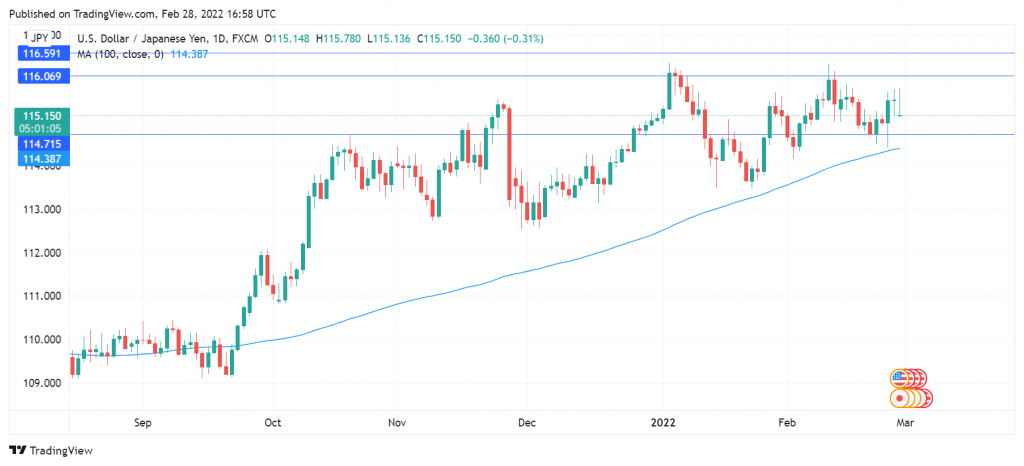Post by: PocketOption on Mar 01, 2022, 05:40 am
Japanese production, retail sales fall
Japan’s factory output declined for a second consecutive month as supply disruptions continue to take a toll on manufacturing. Industrial production for January fell 1.3% m/m, worse than the consensus of -0.7%. There was no relief from retail sales for January, which dropped 1.9% m/m, compared to the forecast of -1.2%. Covid health restrictions contributed to the drop in consumer spending.
The weak data will weigh on GDP for the first quarter, which is still expected to show a small gain. Inflation has risen but still remains below the BoJ’s target of 2%, which means that the central bank can be expected to continue its loose monetary stance, at a time when most major central banks are tightening policy.
The crisis in e could further muddy the outlook for the county’s fragile economy. Oil has pushed above the 100-dollar level and a disruption in n oil deliveries to world markets will send oil prices even higher, which will raise prices and dampen consumer spending.
The war in e continues, although there was a small ray of hope as n and ian officials met today for face-to-face talks for the first time since the n invasion. The crisis has shaken the financial markets and the n ruble plunged over the weekend in response to tough sanctions from Western countries. Along with the US dollar, the yen has been an attractive safe-haven asset for panicky investors who have been dumping riskier holdings. USD/JPY has held steady since the crisis began, unlike the other majors which have buckled under the weight of the US dollar as risk appetite has dampened.
.
USD/JPY Technical
- USD/JPY has support at 114.71. Next, the 100-DMA at 114.37 is providing support
- There is resistance at 116.06 and 116.59
Source: Yen posts gains despite weak data (https://www.marketpulse.com/20220228/yen-posts-gains-despite-weak-data/)
